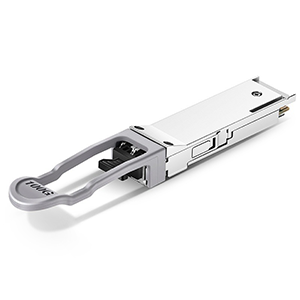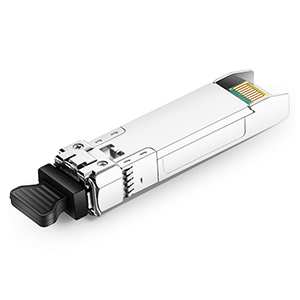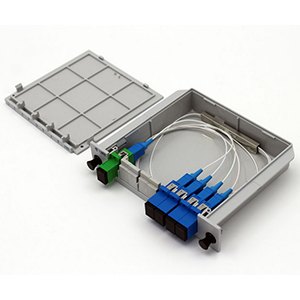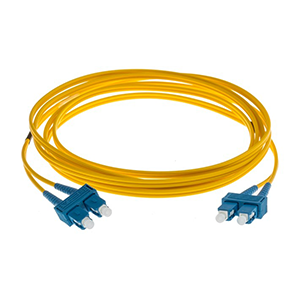Fiber optic cables play a key role in modern networks. This article will focus on the transmission speed of OM4 fiber optic cables. We will first define the working principle and advantages of fiber optic cables, and explain that their main classifications include single-mode fiber and multi-mode fiber. Next, we will introduce the characteristics of OM4 fiber optic cables, including its basic parameters and excellent transmission performance.
OM4 fiber can support data transmission up to 100Gbps, suitable for data centers and high-bandwidth networks, as well as backbone networks and metropolitan area networks. Finally, we will compare OM4 with other fiber models, such as OM3 and single-mode fiber, and analyze their differences in transmission bandwidth and distance.
What is fiber optic cable
Fiber optic cable is a high-speed network connection medium that uses optical signals to transmit data. It has the advantages of high transmission rate, long distance, and strong anti-interference, and is widely used in modern communications and the Internet.
The working principle and advantages of optical fiber network cable:
Optical fiber network cable uses optical signals for data transmission, and has the following advantages over traditional copper cables:
(1) High-speed data transmission based on optical transmission:
- Optical fiber can carry high-bandwidth optical signals and support high-speed data transmission at the Gbps level.
(2) It has the characteristics of low loss and anti-interference:
- The optical fiber transmission process has very low loss and can achieve long-distance transmission.
- Optical signals are not easily affected by electromagnetic interference, and transmission is more reliable and stable.
Main categories of optical fiber network cables:
Depending on the core diameter and transmission mode of the optical fiber, it is mainly divided into the following two categories:
(1) Single-mode fiber (SM):
- The core diameter is relatively small (9-10μm) and only supports a single transmission mode.
- Usually used for long-distance transmission and has good transmission performance.
(2) Multi-mode fiber (MM):
- The core diameter is relatively large (50-100μm) and supports multiple transmission modes.
- It is more suitable for short-distance transmission and has a relatively low cost.
In addition, different multimode optical fibers also have OM1, OM2, OM3, OM4 and other models, corresponding to different bandwidth and transmission distance indicators. In general, optical fiber cables play an increasingly important role in current high-speed networks with their excellent transmission performance and reliability.
Features of OM4 optical fiber cables
OM4 optical fiber cables are multimode optical fibers with higher bandwidth and longer transmission distances. They are suitable for high-density data centers and high-speed network environments, supporting data transmission rates of up to 100Gbps. Their main features are as follows:
1. Basic parameters of OM4 optical fiber:
- Core diameter: 50 microns
- Cladding diameter: 125 microns
- This larger core diameter enables OM4 optical fiber to support multiple transmission modes.
2. Transmission performance of OM4 fiber:
- Supports data transmission rate up to 100Gbps.
- Can achieve a connection distance of up to 50-150 meters.
- This excellent transmission performance makes OM4 the preferred fiber type for current high-speed networks.
Compared with earlier multimode fiber types, OM4 fiber has greatly improved in bandwidth and transmission distance. This enables OM4 fiber to meet the needs of current high-bandwidth application scenarios such as data centers and campus networks. In general, the high performance characteristics of OM4 fiber make it an ideal choice for ultra-high-speed network transmission.
Application scenarios of OM4 fiber optic cables
OM4 fiber optic cables are widely used in data centers, enterprise LANs, and high-performance computing environments. They are suitable for long-distance, high-speed data transmission, especially in scenarios that require support for 40Gbps or 100Gbps connections. They are mainly used in the following types of high-bandwidth network environments:
1. Data centers and high-bandwidth networks:
- OM4 fiber supports ultra-high-speed transmission standards such as 100G Ethernet.
- It can meet the needs of data centers and other applications for large-capacity, low-latency transmission.
- It provides an ideal transmission foundation for high-speed interconnection and cloud computing applications in data centers.
2. Backbone networks and metropolitan area networks:
- OM4 fiber can solve the problem of long-distance high-speed transmission.
- It plays an important role in scenarios such as metropolitan area networks and backbone networks.
- It provides strong technical support for the continuous upgrading and expansion of future networks.
In general, the high bandwidth, low loss and long-distance transmission capability of OM4 optical fiber make it the preferred optical fiber type for current high-speed network construction. Whether it is data center applications or metropolitan area backbone networks, OM4 optical fiber can provide a solid transmission foundation for the network.
Comparison of OM4 network cables with other optical fiber models
Compared with OM3, OM4 optical fiber network cables have higher bandwidth and longer transmission distances, suitable for higher-speed data transmission, while compared with single-mode optical fibers, they have lower costs but shorter transmission distances.
1. Performance comparison between OM3 and OM4:
- OM4 fiber has better transmission performance than OM3:
- OM4 can support ultra-high-speed transmission up to 100Gbps.
- OM4 can reach a transmission distance of 50-150 meters, which is better than OM3.
- Therefore, OM4 is more suitable for application scenarios that require ultra-high bandwidth and medium- and long-distance transmission.
2. Differences between OM4 and single-mode fiber:
- Single-mode fiber is mainly used for longer-distance transmission:
- Single-mode fiber can achieve a transmission distance of tens of kilometers or even longer.
- However, the cost and deployment complexity of single-mode fiber are relatively high.
- OM4 is more suitable for medium- and short-distance network applications:
- The transmission distance of OM4 optical fiber is generally between 50-150 meters.
- But OM4 has more advantages in cost and deployment difficulty.
In general, OM4 optical fiber plays a key role in medium- and short-distance ultra-high-speed networks, and can economically and efficiently meet the needs of current data centers, campus networks and other applications. Single-mode optical fiber is more suitable for backbone networks and metropolitan area network scenarios that require longer transmission distances.
Summary
The high-speed transmission performance of OM4 optical fiber network cables makes it play a key role in building high-performance networks. Our company has long focused on the research and development and application of optical fiber communication technology and has rich practical experience. We provide a full range of OM4 optical fiber network cable products to meet the needs of different network environments.
Our OM4 fiber optic cable adopts the industry’s leading technical solutions, and has achieved excellent levels in transmission rate, reliability and deployment flexibility. At the same time, our engineering team will provide you with professional demand analysis and solution design services to ensure that the deployed OM4 fiber optic cable solution can meet your actual needs to the greatest extent. Contact us now to learn more.
OM4 Network Cable Speed FAQ
OM4 network cables support speeds up to 100 Gbps (Gigabits per second) for Ethernet applications.
OM4 cables can support 100 Gbps Ethernet over distances up to 150 meters when using multimode fiber optics.
Yes, OM4 cables can support 40 Gbps Ethernet over distances up to 400 meters.
OM4 cables are commonly used in data centers for high-speed network connections, such as 40 Gbps and 100 Gbps Ethernet links.
Both OM3 and OM4 can support 40 Gbps and 100 Gbps Ethernet, but OM4 offers longer distance capabilities—up to 150 meters for 100 Gbps, compared to 100 meters with OM3.
OM4 cables use multimode fiber (MMF) with a core diameter of 50 micrometers (µm), optimized for high-speed data transmission.
Yes, OM4 cables can support 10 Gbps Ethernet over distances up to 550 meters, making them highly suitable for high-performance networking.
OM4 cables have a bandwidth of 4700 MHz·km, which allows for higher data rates and longer transmission distances compared to OM3 cables.
Yes, OM4 cables are backward compatible and can support lower-speed applications, such as 1 Gbps and 10 Gbps Ethernet, while also being future-proof for higher speeds.
OM4 cables provide higher bandwidth and longer transmission distances for high-speed Ethernet (40 Gbps and 100 Gbps) compared to OM2 and OM3, making them a better choice for future-proofing network infrastructure.






